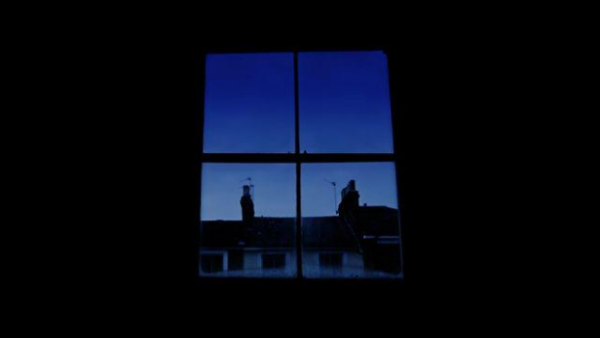Child of Rage (TV Documentary Short) | Released: 1990 | Rated: Unrated | Running Time: 30 minutes
I got sucked into a Youtube vortex last week that ultimately led to a countdown of controversial documentaries. It was pretty standard fare: Blackfish, Jesus Camp, Earthlings, and The Bridge were among the films listed. I’d seen most of them, but Child of Rage in particular caught my eye. In my current line of work, I interact with children who have witnessed abuse. Behavioural issues are not uncommon, and I was struck by the story Child of Rage told. This heartbreaking and disturbing TV Documentary aired in 1990 on HBO. It shows the real therapy tapes of a 6 ½ year old girl named Beth Thomas who experienced infant abuse and displayed subsequent “reactive attachment disorder”. This disorder is thought to occur when an infant does not attach to his/her primary caregiver (usually the mother) adequately in the early years. It manifests itself as disordered social models, behavioural disturbances, and in Beth’s case, a total lack of empathy or compassion.
Beth looks like a seemingly normal child. Her tiny frame and missing teeth plead innocence, but the minute she speaks a chill runs down your spine. The most disturbing part of this short documentary is Beth’s total lack of emotion. She recounts horrifying stories of abuse with a blank expression, glancing into the camera every now and again with her piercingly bright blue eyes.
We’re also introduced to Beth’s adoptive parents, a minister and his wife who adopted Beth and her younger brother John. They are well-meaning people who speak frankly about their situation; you can tell they’ve been dealing with it for some time. They share the fact that Beth and John were found by social services in their own filth, neglected and abused. Beth recounts terrible sexual abuse by her birth father, only one consequence of which is her inappropriate sexual interaction with family members.
Beth openly admits her desire to kill her entire family. She tells of repeatedly smashing John’s head into a cement floor, only stopping because her mom gets involved. She steals knives and plans to stab her parents at night. One of the most chilling quotes from the documentary is when the therapist asks, “Why do you want to do it at night?” and Beth responds, “Because I don’t like them seeing me do it, but they’ll feel me do it.” she is kept locked in her room at night to prevent her from injuring the family.
The family pets are not exempt from Beth’s rage. She recounts sticking pins into them, and killing a nest of baby birds. She seems to understand that she does these acts because of her inner pain, but shares no empathy or consideration for the pain of others. The documentary is not totally depressing - progress is shown through Beth’s experimental “attachment therapy” treatment, with a woman named Connell Watkins, that results in visible changes to her demeanor and emotional displays by the end of the film.
Short on time but chock full of disturbing retellings, this is a short documentary you’ll want to see. It gives an eerie look at the effects of child abuse and shows the transformation of a young girl. And because you’re already wondering: today, Beth is a Registered Nurse and seems to live a full and happy life.
Child of Rage (TV Movie) | Released: 1992 | Rated: Unrated | Running Time: 1 hour 34 minutes | Directed: Larry Peerce | Written: Phil Penningroth, Suzette Couture
There is also a 1992 TV movie telling the story of Beth (though in the film she is called Catherine, or Cat) and her family. This movie version is automatically less disturbing, despite the great performance of Ashley Peldon as Catherine. Her sinister glare and evil smile are memorable. She plays mother to her younger brother Eric throughout the movie, dictating his every move and punishing any resistance.
Filmed with direct re-enactments of stories told by Beth in the documentary, several uncomfortable scenes are shown. This includes abuse done to both her brother and the animals in the house. Though, in therapy, Beth speaks fully of her father’s sexual abuse, this is more implied in the movie as Cat has dreams in inverse color of a man approaching her bed. She shows his actions with her teddy bears and tears them apart in one scene, learning to deal with her anger. “I killed him! I killed him!” she cries, as her terrified brother frantically blows an emergency whistle to wake their parents.
The parents seem more helpless here than in the actual therapy videos. In the beginning, they’re portrayed as delightfully naive and woefully unprepared. Perhaps they were, having no children of their own. They argue with each other over the best method to help Catherine. Cat’s tantrums are violent and destructive and her mother openly struggles with her ability to love her.
One thing that was clearer in this movie was the idea of what “attachment therapy” is. Without getting into the controversial pseudoscience: a therapist holds Cat down as she screams and fights in order to help her access her rage, and then feel the pain behind it. It’s interesting to note that approximately 8 years later a child (Candace Newmaker) was killed in the same woman’s therapy program. Beth Thomas testified on Connell’s behalf at her trial when she was tried and convicted of reckless child abuse resulting in death.
The TV movie version is eerie, but is not necessary viewing. While three times as long as the documentary, most of the addition is reenactments that you’ll already have seen vividly in your head if you’ve seen the documentary, or when showing the therapy sessions. If you’re going to watch both, watch the documentary first. The truth doesn’t change: what happened to Beth Thomas is gut-wrenching and had a real impact on her life.
@bexbz






